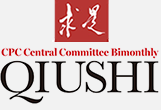The Lantern Festival: A cultural journey
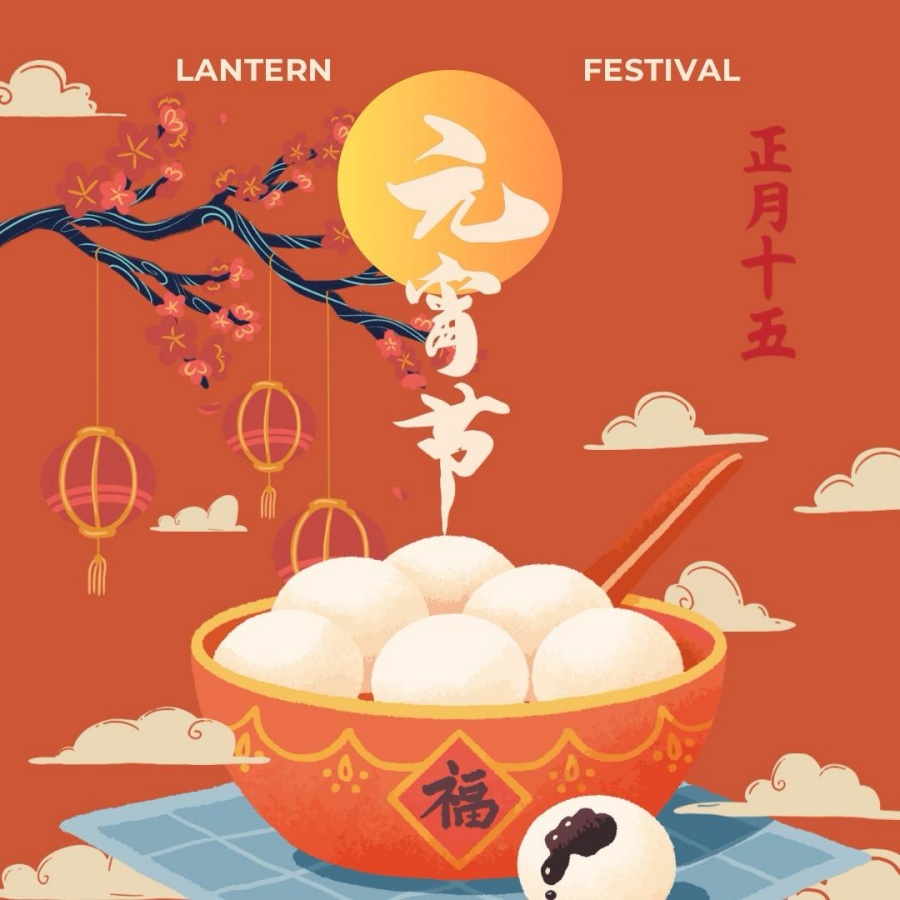
Editor's Note:
Have you been seeing a lot of red recently? This vibrant color is seen all around China during the Spring Festival, from clothes stores to city streets. The Chinese Spring Festival culminates with the Lantern Festival, which takes place on the 15th day of the first lunar month. The festival has evolved over the past two millennia to become the pinnacle of Chinese New Year celebrations, when loved ones gather to gaze upon the moon, savor traditional glutinous rice balls, and let their hair down for a day of romance.
As the joyous Spring Festival draws to a close, follow People's Daily Online to learn more about this traditional yet lively celebration!
Love and romance in the air
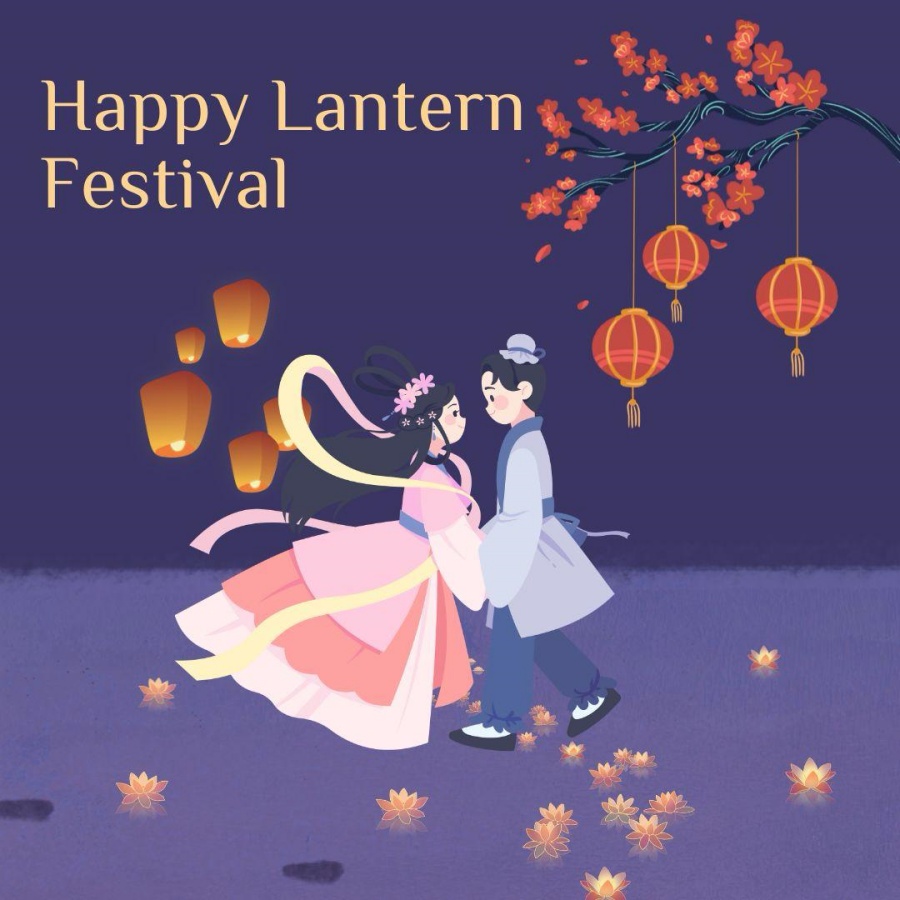
Known as Yuanxiao Jie in Chinese, the Lantern Festival is considered the perfect ending to the weeks-long Chinese New Year preparations and celebrations. It celebrates the first full moon of the year — hence the name (Yuan means beginning, Xiao means night).
During the Tang Dynasty (618–907), the Lantern Festival formally became a national-level celebration, with its origins in the Han Dynasty (206 BC–AD 220). As the Song Dynasty (960-1279) progressed, lantern riddles were added to the festivities and eventually became an essential component of the celebration.
In ancient China, it was also a romantic event where single men and women could mingle. In ancient times, young ladies rarely left their homes, particularly daughters of aristocratic households. However, it was a practice during the Lantern Festival for everyone, including those young women, to attend lantern shows.
For young women, watching lanterns at night was a chance encounter with their loved ones. Guessing the answers to lantern riddles is another pastime that allows young people to interact and learn more about one another. The Lantern Festival has been the setting for countless love stories that date back hundreds of years.
This 1,000-year-old poem, written by famed poet Ouyang Xiu during the Song Dynasty, highlights the romance of this festival.
Last Festival of Vernal Moon,
the blooming lanterns bright as noon.
The moon above a willow tree,
shone on my lover close to me.
This Festival comes now again,
the moon and lanterns bright as then.
But where's my lover of last year?
My sleeves are wet with tear on tear.
(translated by Xu Yuanchong)
The sweet taste of the Lantern Festival
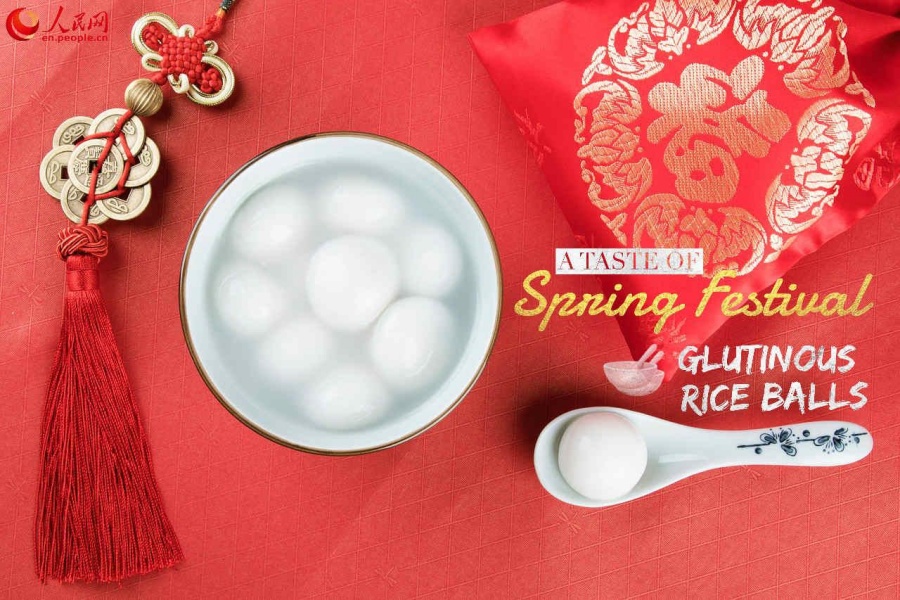
Glutinous rice balls, or Tangyuan (汤圆), is a sweet dish served during the Spring Festival in southern China. Unlike dumplings, the dough of Tangyuan is made using glutinous rice powder and has a sweet filling made of ingredients such as red bean paste, fruit and brown sugar.
The rice balls are usually cooked and served in boiling water with fermented glutinous rice and sweet ginger syrup, though in some regions, they can also be deep-fried to add a stronger flavor. Glutinous rice balls are usually shared among all family members. Their round shape signifies family togetherness, while tangyuan is a homophone for union (团圆-tuanyuan).
Popular in both northern and southern China, glutinous rice balls may take different forms or names in different regions. In the north of China, this dish is usually called Yuanxiao and is served during the Lantern Festival, while in south China, the rice balls are typically served in a savory soup made with Chinese radish and homemade fish cake on Chinese New Year's Eve.
A traditional festival with modern vitality
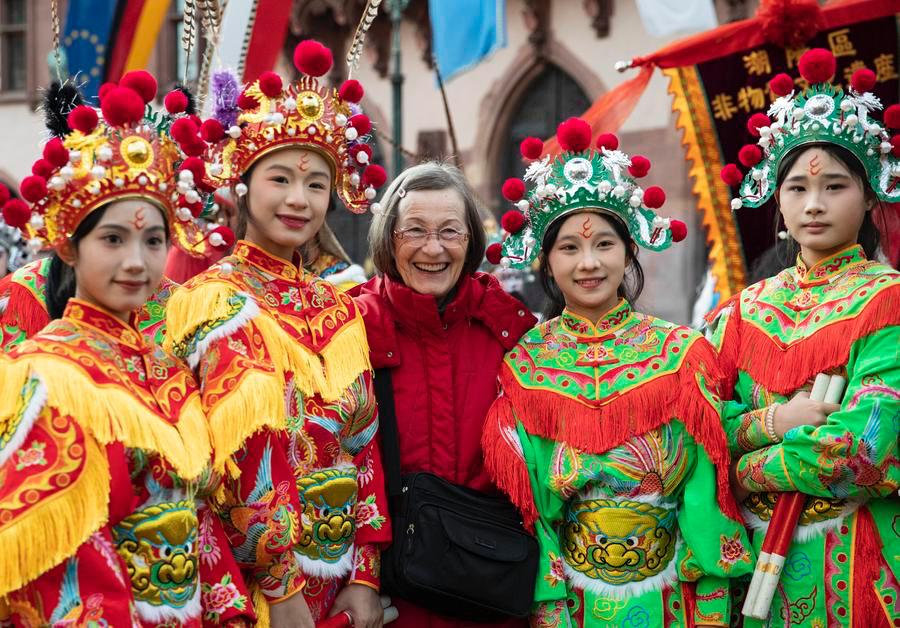
A woman poses for a photo with members of a Yingge team during the Spring Festival temple fair in Frankfurt, Germany, on Jan. 31, 2025. [Xinhua/Zhang Fan]
Spectacular lantern fairs have been a part of every Lantern Festival celebration in modern times, paying homage to the tradition that began during the Han Dynasty (202 BC- AD 220).
In 2019, Beijing's Palace Museum hosted a splendid lantern night as part of the Lantern Festival. This was the first Lantern Festival conducted at the Palace Museum and the first large-scale nighttime illumination of the Forbidden City's ancient architectural complex.
Modern technology, including LED lights and projection mapping, was integrated into creative light installations and art displays, enabling visitors to engage with history and cultural heritage in new and innovative ways.
In modern-day China, the festival is still a chance for young people to socialize, much like the ancient Chinese amorous event, through activities like playing card games or attending lifestyle fairs and workshops.
As global interest in Chinese culture has increased, the Lantern Festival has also served as a portal through which non-Chinese speakers can gain a deeper understanding of Chinese traditions.
This year's Spring Festival is the first since its inscription on the UNESCO intangible cultural heritage list. The Chinese New Year is becoming a festival celebrated across the world. As nearly 20 nations recognize the Spring Festival as an official holiday and some 200 countries hold celebrations, this cultural event reflects humanity's shared yearning for renewal and connection.




















